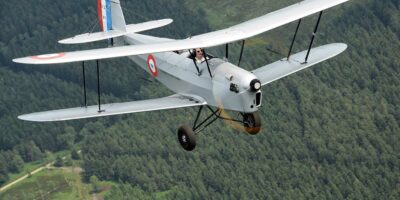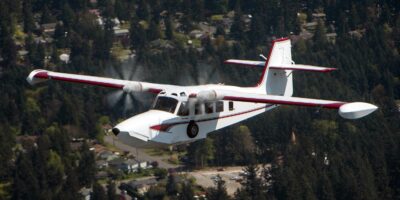Here’s a radical idea to improve your flying and make better aeronautical decisions: Cancel your aircraft hull insurance (and keep the liability part, only).
Doing so places a big financial bet on yourself, your flying skills, and your ability to fly safely in the future – and it may even alter your definition of acceptable risk.
Without hull insurance, sharpening your stick-and-rudder skills becomes urgent, your aeronautical decisions become more conservative, and your attention to maintenance details is heightened. A crosswind you might have regarded as challenging, but acceptable with insurance, leads you to find an alternative runway without it. An intermittent magneto problem that might have been deferred becomes a no-go item that must be addressed right away.
I used to own a single-seat Pitts aerobatic biplane with an insured value of $30,000, and my insurance premiums were $1,200 a year. At that rate, my insurance premiums would completely pay for the aeroplane in 15 years (assuming a five per cent rate of return on my savings). Put another way, I could fly the aircraft for 15 years without insurance, then total it, and still come out even financially.
“Without hull insurance, sharpening your stick-and-rudder skills becomes urgent”
The arguments for self-insuring get even more persuasive when you think about how little hull insurance actually covers. A ground loop, for example, that scrapes the fabric on a wingtip and would cost $2,500 to repair – a fairly common Pitts mishap – doesn’t meet the $3,000 insurance deductible. And a pilot is unlikely to make such a claim anyway, out of fear that doing so would cause future premiums to go up.
The best argument I ever heard in favour of hull insurance, however, came from a fellow Pitts pilot who described himself as a notorious cheapskate. “I know myself, and if I had an aerial emergency and my aeroplane wasn’t insured, saving the aeroplane would figure into what I did next,” he said. “I might try to land on a road and save my investment rather than bail out. I pay for the insurance so that, if that moment ever comes, I can make a purely aeronautical decision – not a financial one.”
There are lots of horror stories of premiums doubling or tripling, even among exemplary clients who have seldom, if ever, made claims. The reasons that insurance companies give often have nothing do with general aviation. They point to the Boeing 737 Max debacle, floods, forest fires, and other massive events in which insurance companies are on the hook for billions of dollars in claims. Corporate aviation hasn’t been blameless, either, with a spate of high-profile jet losses (such as the August 19, 2019, crash of a Citation Latitude in which former NASCAR driver Dale Earnhardt Jr. was a passenger). Insurance companies are also demanding that corporate flight departments add more simulator training in order to obtain insurance at all.
On the lighter side of the GA market, some insurers have been demanding that pilots over 70 years of age get FAA third class medicals instead of BasicMed, and they’ve been refusing to insure pilots aged 80+, regardless of their medical status, even though there’s no data to suggest these requirements will increase safety or reduce claims. As the insurance companies tell it, they’ve been losing money in a buyer’s market too long, and it’s payback time.
The lighter end of the GA market has largely been spared the worst of the price increases – so far. But anecdotal evidence indicates that that is changing. Amphibious aircraft are some of the most expensive to insure, for obvious reasons. If the pilot leaves the wheels down in a water landing, the aircraft is almost sure to flip over and wind up wrecked. There’s also the risk of a sudden, grinding stop on a hard surface runway if the pilot lands with the wheels up – although the damage from such events is usually minor. Amphibious aircraft also are subject to the long list of normal hazards inherent in backcountry flying.
A friend with an amphibious Light Sport Aircraft valued at $120,000 recently cancelled hull insurance for which he was paying $6,000 a year, and now he’s going with liability only for $600. How does it feel to fly without hull coverage?
“I’ve been flying the aeroplane regularly for several years,” he said. “I keep it in top mechanical condition, and it’s a sport plane that only flies in good weather. In a sense, I’m betting that I’ll continue to fly safely in the future, but if there’s anything that aviation has taught me, it’s how to calculate and minimise risk. This doesn’t feel like a stretch.”
Does it change the way he flies? “I didn’t anticipate this when I cancelled my hull insurance, but I feel like fully accepting the financial risks has made me a safer pilot,” he said. “I’m hyper-aware of hazards, I do my best to hone my skills, and I really try to think things through. If I’m still flying my aeroplane 15 years from now, I’ll know I did the right thing.”
RV-4 pilot, ATP/CFII, specialising in tailwheel and aerobatic instruction
[email protected]







